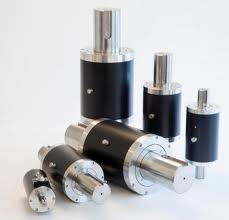Rotary Torque Sensors
Rotary Torque Sensors or torque transducer or torquemeter is a device for measuring and recording the torque on a rotating system, such as an engine, crankshaft, gearbox, transmission, rotor, a bicycle crank or Cap Torque Tester. Static torque is relatively easy to measure. Dynamic torque, on the other hand, is not easy to measure, since it generally requires transfer of some effect (electric or magnetic) from the shaft being measured to a static system.
One way to achieve this is to condition the shaft or a member attached to the shaft with a series of permanent magnetic domains. The magnetic characteristics of these domains will vary according to the applied torque, and thus can be measured using non-contact sensors. Such magnetoelastic torque sensors are generally used for in-vehicle applications on race cars, automobiles, aircraft, and hovercraft.
Commonly, rotary torque sensors or torque transducers use strain gauges applied to a rotating shaft or axle. With this method, a means to power the strain gauge bridge is necessary, as well as a means to receive the signal from the rotating shaft. This can be accomplished using slip rings, wireless telemetry, or rotary transformers. Newer types of torque transducers add conditioning electronics and an A/D converter to the rotating shaft. Stator electronics then read the digital signals and convert those signals to a high-level analog output signal, such as +/-10VDC.
A more recent development is the use of SAW devices attached to the shaft and remotely interrogated. The strain on these tiny devices as the shaft flexes can be read remotely and output without the need for attached electronics on the shaft. The probable first use in volume will be in the automotive field as, of May 2009, Schott announced it has a SAW sensor package viable for in vehicle uses.Finally, another way to measure torque is by way of twist angle measurement or phase shift measurement, whereby the angle of twist resulting from applied torque is measured by using two angular position sensors and measuring the phase angle between them.
